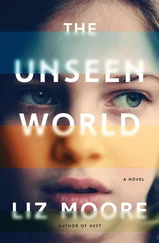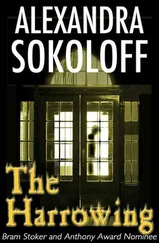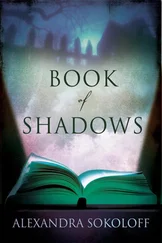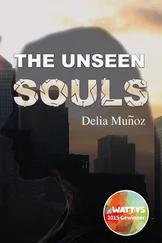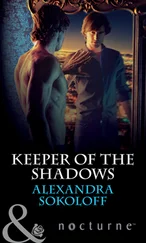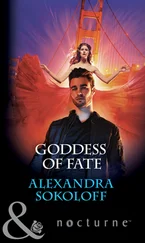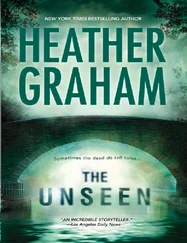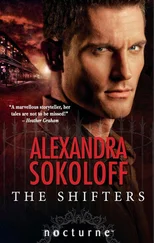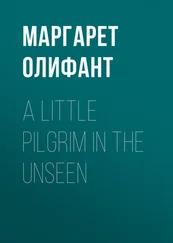“Conscious. Recovering,” Laurel said, standing in the doorway. And she added silently, Thank God, thank God . “Faster than you, actually. They’re young. I visit them and they… they’re starting to talk. I’ll be there when they do.”
Brendan looked as if ten years had dropped from him. Then slowly his face tightened. “And Anton?”
Laurel’s eyes clouded; she felt a range of emotions she could not name. “The police went to the house.” Laurel had emphasized the possible danger to the cops, the destruction she and Tyler had seen. But she had not gone with them—not that they would have allowed it—but she was certain in the core of her that they were safer without her. She was afraid to activate the house.
Folger House had been empty. The great room was in chaos, but a chaos still attributable to the random destruction of a criminal, though Laurel had wondered more than a few times what the police had made of that inexplicable scattering of rocks. There was no one else in the house—living, dead, or otherwise.
Brendan stared at her, stupefied. “But where…”
She lifted her hands. She had no idea. Did he revive and get out somehow? Did the house—or whatever was in it—take him? She remembered the horrible screaming at the end….
“The police said there was no trace,” she answered.
“And there’s no record at all, is there? The cameras…” Brendan asked, and added quickly, “Don’t take that the wrong way. I just meant…” He stopped, swallowed hard. “There’s a lot I don’t remember, and what I do…”
She knew what he was going to say. She’d heard it from Tyler and Katrina, and when Brendan spoke he sounded as young as they were, lost and groping.
“Did it really happen? I… don’t know what’s real anymore.”
“I have no idea,” she said simply.
He nodded, looking faintly ill.
“There was nothing left,” she said. “The hidden cameras in the great room and system in the attic—they burned. Electrical fire, the police said.” Only the electricity had been off for a day . “Completely destroyed.”
Brendan closed his eyes… then opened them and looked at her.
“Why did you even bother to take me out? Why not just leave me? It was what I deserved.”
She looked away from him and said slowly, “I know what it is to be out of your mind. I’ve spent some time there myself.” She looked out the window, and found with faint surprise that the thought of Matt didn’t cut her heart open anymore.
“I was lost for a long time. I came out of it.” She looked at him briefly. “I believe people can change.”
He bowed his head. “I swear. I…” He looked up, and there was real pain in his face. “It was never supposed to be about hurting you.”
She nodded, abstractly. “The thing is, I knew . I knew about—someone else, and I knew about you.” She stopped. “I need to trust when I know.”
“Mickey.” Brendan said softly, and despite everything, she felt it in her heart. “What will you do now?”
“I have no idea,” she said again. “I doubt either of us will have a job by the end of the week, but…” She thought of Uncle Morgan. “Somehow that doesn’t seem so important anymore. There are other things I need to do.”
He looked at her probingly. And then she smiled, with a tremor, and quoted softly. “‘How can we not devote our lives to pursuing that question—of whether a thing like this could happen, and how?’”
And she looked away from him, out the window at the sun, the sky, and the rolling hills.
The Unseen was inspired by the work of parapsychologist Dr. Joseph Banks Rhine at Duke University from 1927 to 1965. The history of Rhine’s ESP experiments has always fascinated me; I can still get a thrill just from seeing the Zener card symbols on a page. As the daughter of scientists and educators, I am drawn to the idea that such an elusive thing as ESP could be scientifically proven. And as a thriller writer I know a good story when I see one.
Though The Unseen contains some factual circumstances, I have of course embellished the real-life history in all kinds of ways, and will take a brief moment here to delineate the facts from the wild ravings of my imagination.
Dr. J. B. Rhine (1895–1980) began his scientific career studying botany, earning advanced degrees at the University of Chicago, but after a brief stint of teaching he switched fields to study psychology at Harvard under Professor William McDougall, a colleague of celebrated philosopher and psychologist William James. In 1927 McDougall was named the head of the new Duke University psychology department in Durham, North Carolina, and Rhine and his wife and colleague, Dr. Louisa Rhine, moved to Duke with him.
In the psychology department at Duke, Dr. Rhine began his soon-to-be world-famous ESP experiments using Zener cards, and psychokinesis experiments using automated dice-throwing machines. Rhine’s intention was to use rigorous scientific methodology to test and prove the existence of ESP, and Rhine and McDougall coined the term parapsychology to describe the study of paranormal psychological phenomena such as telepathy, clairvoyance, and psychokinesis.
Rhine’s work led to the establishment of a dedicated parapsychology laboratory at Duke, headed by Rhine, in 1935. Over his thirty-eight years at Duke, Rhine tested thousands of students for ESP ability, using the Zener card method depicted in The Unseen , and employing the new science of statistics and probability to analyze the results. Dr. Rhine identified test subjects who were able to predict the cards with an accuracy far higher than statistical chance, which led him to conclude that ESP really does occur.
In 1934 Rhine published his findings in his monograph, Extra Sensory Perception , which was published in several editions in many countries, and which made Rhine internationally famous. He is now credited with almost single-handedly developing a methodology for parapsychology as a form of experimental psychology.
In the late 1940’s Dr. Louisa Rhine began to collect reports from all over the world of spontaneous psi experiences, further contributing to our understanding of clairvoyance, telepathy, precognition, and crisis apparitions.
In 1957, William Roll, a parapsychology researcher who studied at Berkeley and Oxford, joined the staff of the Duke parapsychology lab, and he and Dr. Rhine’s longtime assistant and researcher, J. Gaither Pratt, conducted field studies of reported poltergeist occurrences, including the famous Seaford, or “Popper” case in 1958. Roll developed the theory of “Recurrent Spontaneous Psychokinesis,” RSPK, to explain poltergeist phenomena; that is, that the random movements, noises and breakages characteristic of a poltergeist manifestation are not the work of ghosts or spirits, but are caused by a human agent, usually a prepubescent child or a teenager, who consciously or unconsciously was projecting mental energy outward to cause the movement of the objects.
As in The Unseen , the Duke parapsychology lab did close down completely in 1965, when Dr. Rhine reached the age of mandatory retirement, and seven hundred boxes of original files from the lab really were stored in the basement of Duke’s Perkins Library on the Duke campus, and have only recently been made available for public viewing. It was the idea and the existence of those boxes that crystallized the story I wanted to tell.
However, from there my story diverges completely from reality, in more ways than one. There is no such person as Dr. Alaistair Leish, or the nefarious Dr. Richard Anton, nor are they based on anyone in real life. There is no such place as Dr. Anton’s Parapsychology Research Center.
Читать дальше

